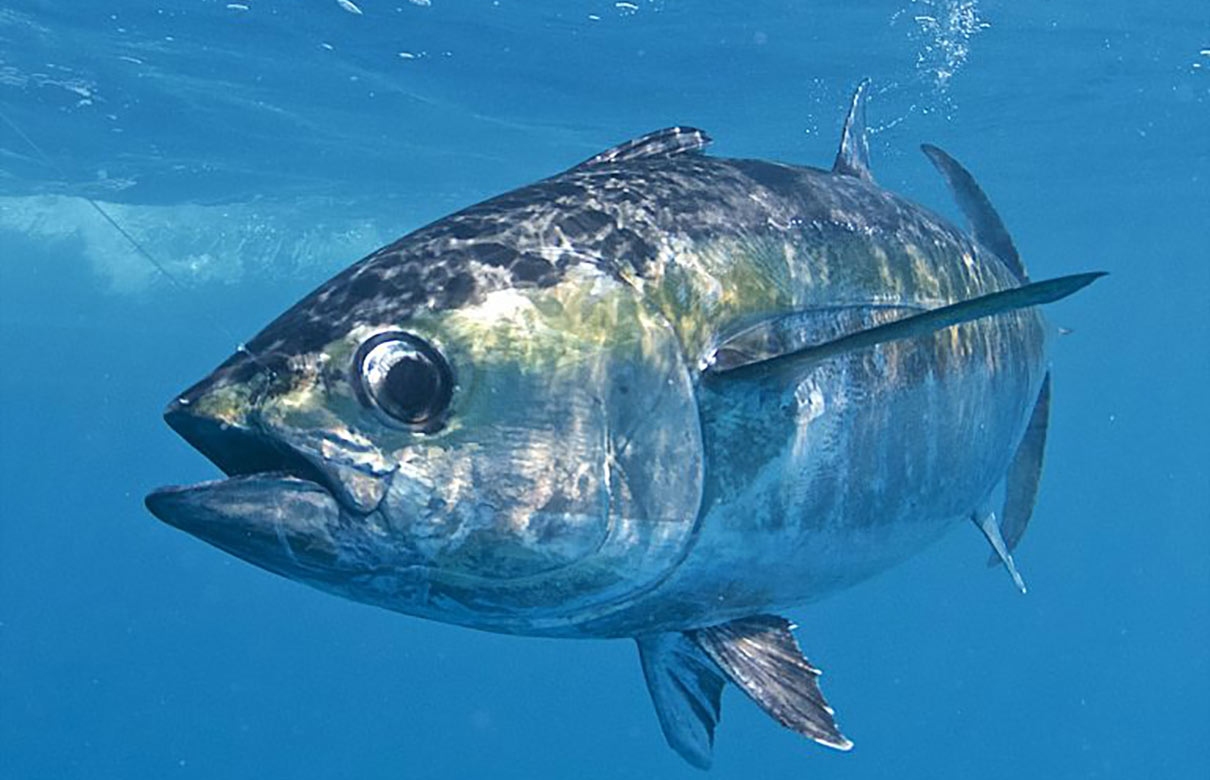Unlocking the Blackfin Tuna Code
By: Jeff Weakley
 Dark fins indicate a blackfin tuna, not the similar and potentially much larger yellowfin. The species overlap in some waters off Florida. (Photo courtesy of Jeff Weakley)
Dark fins indicate a blackfin tuna, not the similar and potentially much larger yellowfin. The species overlap in some waters off Florida. (Photo courtesy of Jeff Weakley)
Florida scientists unlock the blackfin tuna code
Over the years, Florida Sportsman has covered the ins and outs of the blackfin tuna fishery around the Florida coastline: Places these fish are historically abundant, such as the famous Humps in the Florida Keys; the shrimp fleet in the Gulf of Mexico; bluewater ledges off Northeast Florida. We’ve researched baits that are productive – from live sardines to ballyhoo, small trolling plugs to streamer flies. We’ve covered the advent of fluorocarbon leader material, its low refractive index apparently conducive to fooling the sharp-eyed blackfins.
And yet, like many of the anglers and captains we’ve spoken with, we’ve always wondered about the basic biology of our feisty little blackfin. What conditions do they favor? How fast do they grow? When do they spawn? What means might be used to study them, to discern their migratory or foraging cycles?
It’s the brutally ironic thing about fisheries science. The fish that we know the most of, tend to be those which have been most heavily exploited for the commercial market. It’s only when a fish, such as the red drum, bluefin tuna or swordfish, reaches a crisis point that effort and funding align to document critical details of life history, range and reproduction. In the case of blackfin tuna, it has taken basic curiosity and academic initiative to spur this kind of attention.
READ THE FULL STORY ON FLORIDA SPORTSMAN